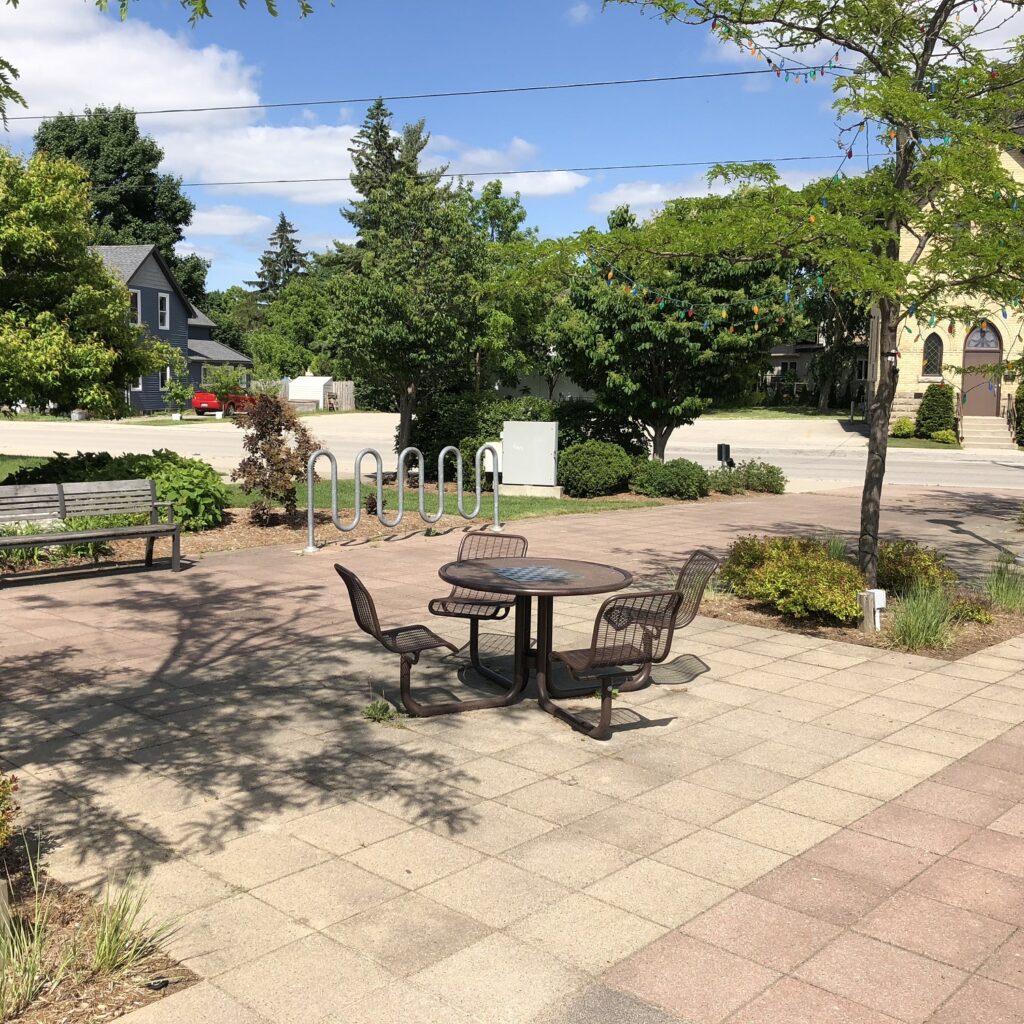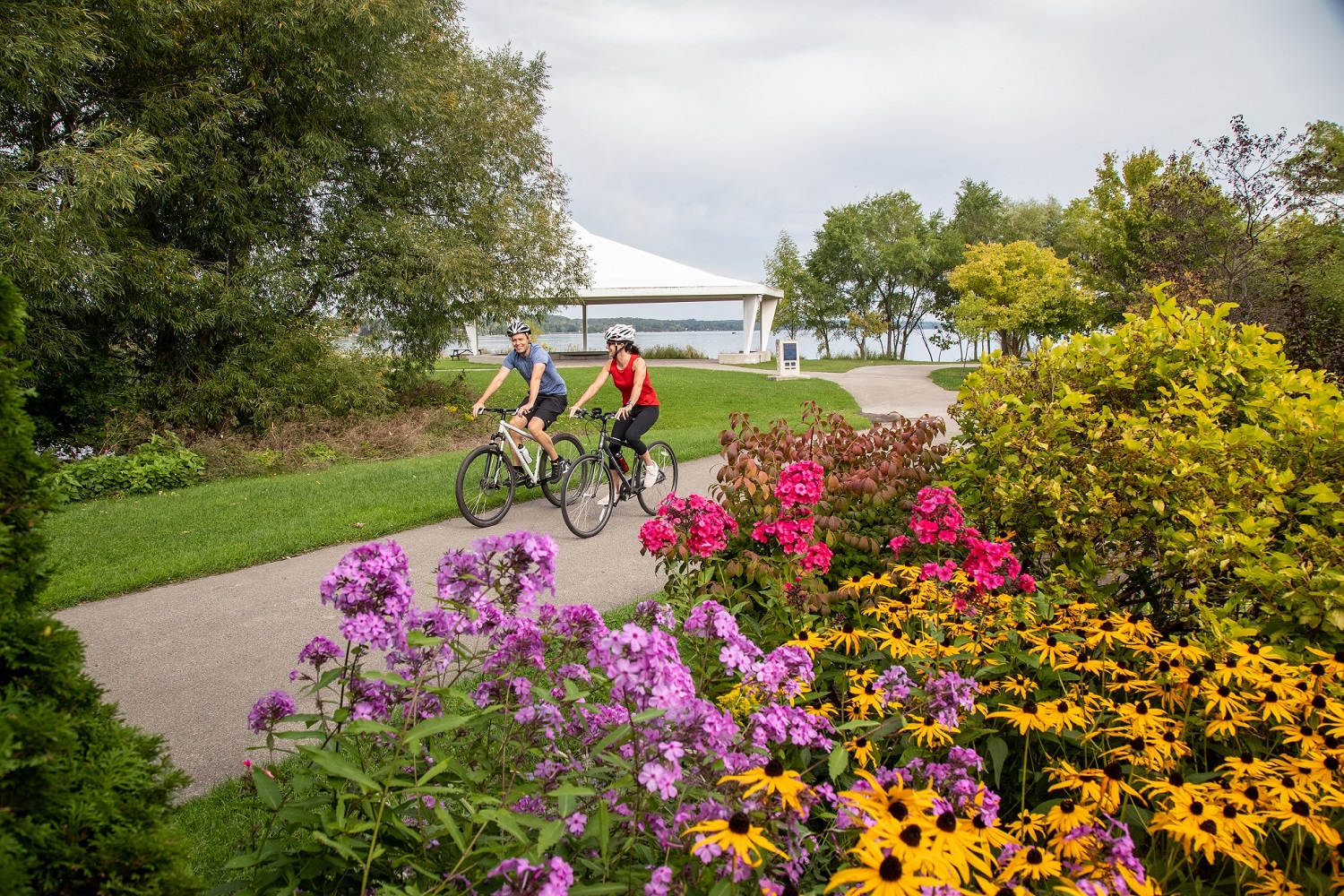Written by Kim Perrotta
Tucked under the scenic southern shore of Georgian Bay in Ontario, Grey County is home to nearly 100,000 people who live in dispersed housing across 4,500 square kilometres of rural areas and small urban centres. Owen Sound, with a population of 22,000 people, is the County’s largest urban centre.
“About 10 years ago, the Health Unit began cultivating relationships with our municipal partners, in particular the Planning Departments in Grey and Bruce Counties, because our counties have high rates of obesity and chronic disease. For example, the rate of cardiovascular disease deaths is 27% higher in Grey and Bruce Counties than the provincial average,” said Jason Weppler, Program Manager, Chronic Disease and Injury Prevention, Grey Bruce Health Unit. “To some extent, these health statistics reflect the fact that both rural counties have older populations.”
About 24% of the people in Grey and Bruce Counties are over 65 compared with 17% of Ontarians. And that difference is not expected to change over the next 20 years. But other factors also contribute to higher rates of chronic disease.
“With no transit, dispersed housing, and small urban centres that were not developed with “walkability” in mind, people in these counties have had fewer opportunities to maintain the levels of physical activity needed for good health. These are issues that can only be addressed by looking at how we design and develop our communities,” Weppler said.
In light of these trends, the County and Health Unit have been collaborating to create healthy, age-friendly communities. In the early years, the planners and public health professionals worked to understand one another’s goals and processes. More recently, they have cultivated relationships with engineers and developers in the County, particularly around issues related to transportation systems.
“As Planners, we don’t necessarily have training in the social and environmental indicators of health so we didn’t understand how community design might influence physical and mental health in our communities. It has been helpful to work with the health unit to understand their goals and to get their help shaping our policies,” offers Scott Taylor, Manager of Planning Services, Grey County. “It has been particularly useful that these conversations are also happening at all levels of staff in our organizations and at the Board of Health where the Medical Officer of Health has been working to educate the mayors and deputy mayors about the links between community design and public health.”
Grey County’s new Official Plan, approved by the Province in 2019, reflects the inter-sectoral collaboration that has occurred in Grey County. It includes a number of over-arching policies, and many very specific policies, that aim to encourage the development of age-friendly, healthy communities. It identifies the need to promote active transportation infrastructure including pedestrian furniture, safe and accessible public open spaces, access to green space, access to healthy affordable local foods, and development for all ages and abilities, and residential intensification, while limiting exposure to environmental hazards.

To achieve these goals, the Official Plan commits the County to considering a wide variety of transportation modes when designing its roads. It indicates, for example, that the County will consider paved shoulders for all County roads to support cyclists and other alternate modes of travel. It also considers the connection of existing and future trails, sidewalks, and paved shoulders throughout the County, acknowledging the health benefits of a connected active transportation network.
Wanting to see these recommendations implemented in each new build, the two Counties and the Health Unit provide a Healthy Development Checklist to developers at the front end of the development process so they can integrate healthy community designs into their projects. It recommends supporting mixed land use by integrating a variety of residential development within 800 metres of retail, recreational centres, parks and public spaces; preserving urban forests and dedicating no less than 5% of the total proposed land area to outdoor public spaces; and designing neighbourhood blocks that are less than 250 meters in length.
One result of the County’s focus on transportation is that infrastructure will be dramatically expanded in the coming decades. A new Cycling and Trails Master Plan was created in 2020 to complement the Official Plan and recommends developing 733 km of cycling and trail facilities over 20 years with 120 km in paved shoulders and 249 km in signed routes to be developed over the first 10 years.
In partnership with students from the Urban and Rural Planning program at the University of Guelph, Grey County also developed Healthy Community and Residential Guidelines to encourage planning and development stakeholders to create connected, pedestrian-friendly, healthy communities that support physical activity. For example, it recommends a 400 metre walking radius to parks.
“The years of education and collaboration are paying off,” notes Scott. “We have seen a change in the attitudes of elected representatives. When projects are proposed now, they are consistently asking important questions such as: ‘where are the parks? Where are the trails/sidewalks?’. There is a feeling across the County now that we are all working towards similar goals.”

